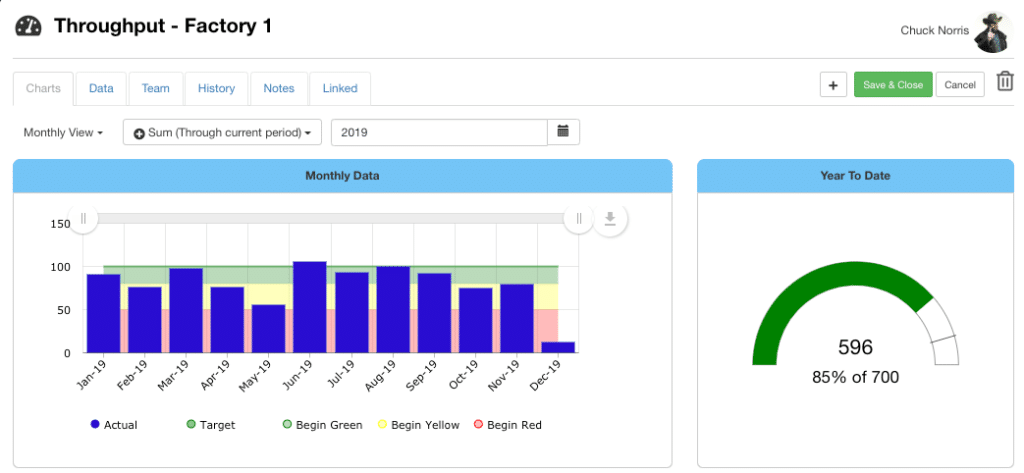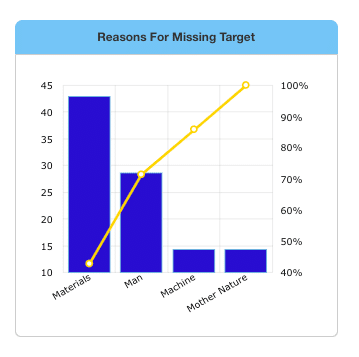Your morning huddle (also known as daily stand-up or daily scrum) is probably the single most effective meeting that you can have with your team. Your huddle board, however, is the most important tools you can use at this meeting.
The key lies in the purpose of the team huddle. Your goal is to check in with team members about what your day will look like. The huddle is not to plan your week or projects—that’s what all the other meetings are for.
An effective morning huddle is chance for your team members to share information with each other and deliver project status checks.
So how can you make your morning huddles more successful? Here’s how to use a huddleboard to make your daily huddle the best meeting you have.
Do I need huddleboard software?
A huddleboard isn’t complicated. It can be as simple as a whiteboard, a few markers, and sticky notes or effective huddle board software. Your board should be visual in nature and have the structure to capture critical information that drives discussion for improvements and remove barriers to success.
Here are four key ingredients that you need to have on your huddleboard that will make it more successful and more effective for you and your team.
Download this Free Strategy Execution Guide
1. Key Performance Indicators
The first thing you have on your huddleboard is your KPIs—Key Performance Indicators.
For example, throughput is a really common KPI.
You should have a chart on your huddleboard that is showing whatever metric or KPI you want to track over time. So that you can see if you’re trending up, down, or just remaining flat.
The other key thing to have with your KPI on your huddleboard is to make sure you have a goal. So, if you’ve got a metric that you’re tracking but there’s no goal associated with it—it’s a problem. You don’t know whether you’re winning or losing—you’ve got to know if you’re winning or losing.
2. Root Cause
What I mean by Root Cause is anytime you miss your posted goal, you want to draw up the reason (or Root Cause) down below, and you’re going to create a Pareto.
Perhaps you missed throughput because of equipment downtime. So, we’re going to write it down, every single time. First, we’re going to mark that on our Pareto, and then we’ll write down a few more indirect reasons. We’ll slowly start to keep track over time what are the primary root causes that are affecting our ability to hit our metric.
Once you have these two components on your huddleboard, you’re in a really good spot. You at least know, on a regular basis whether you’re winning or losing. But, you’re not done yet. There are two more things you need to do.
3. Action
You’re going to get all of your employees’ ideas from this root cause analysis and you’re going to turn those into Action Plans or Kaizen Events.
I like to organize all those into a Kanban labeled: Ideas, To Do, Doing, and Done. Have a stack of sticky notes on your huddleboard. Grab those sticky notes and team members that have ideas are going to put it them under Ideas.
You can customize those sticky notes to have things on them, such as, who submitted it, when they submitted it, when you expect it done by, who’s going to actually do the work, is that you or someone outside the organization that needs to provide support on that. But, all you really need to get started today is just some sticky notes.
Once you have a bunch of ideas, your team in your morning huddle should discuss those ideas and say, “Hey, this is our top reason for missing our throughput, here’s a couple of ideas we have around that, which ones do you think we can actually get done today or this week?”
Those are going to move to your To Do, and this is where you form a little cue, a little backlog of things you’re going to work on.
Once you have some bandwidth, or you give your team, you know, let’s say a half hour a day to do process improvement. Next, you’re going to take those ideas that you thought you had in your cue that were good ideas, and you’re going move those over to the Doing. Then, go work on them, and then when they’re done, you just move them right over to Done. And this is where you’re going to keep a big pile of all the projects you completed, all the Kaizen events you’ve done, the little quick wins—anything your employees are doing, no matter how small, you want to look at that, keep track of it, and then celebrate it.
4. Celebrate
These ideas—they came from people. How did the work get done? They came from your people. So, you need to make sure your people know how much you appreciate the hard work they’re putting in to improving their process.
In this section, what I like to do is create little cards that have the person’s name on it. Let’s say this team member Sara she did a fantastic job, she worked on a lot of ideas this week, she’s been really driving this metric that we’re focused on. We’re going to make sure to put Sara’s name up there, and if you make a card with Sara’s picture, and you have it laminated, you can put it up there and underneath the person’s name, you can write a little note just in dry erase marker on a laminated sheet of what they did that you’re recognizing them for.
You can put these up there every day for your meetings. You put all your people up there. Let their teammates see they’re doing a great job. And then you pull them down, you know, once a week and replace them with whoever’s working on the project for that next week.
Celebrate will be the engine, it will be the fuel that drives the success of your team’s engagement in this process improvement process. Because, if you just go back to your team and say, “Hey, we’re just going to try to drive this metric.” That kind of feels like work, we’ve got to really hit this number, okay? Individual team members ask, “Why? That helps the company, that’s great, how does it help me?”
But if you say, “Guys, all we’re trying to do is understand what is the problem that’s keeping us from hitting the metric and what can we do about it?” And then say, “Wow, these people already solved a bunch of problems…” That’s going to change the conversation to where the energy level will come up and your team will be like, “Yeah, we can solve these problems, we do understand what’s bothering us and preventing us from hitting our goal.”
This process just fuels itself. It just goes around and around. Where every time someone is recognized, they want to look at this and come up with another idea and do it again.
Effective Huddleboard Design
Huddleboards can have lots of information on them. You can put people’s attendance on there, you can put your 5S score, there’s lots a data that can go onto a huddleboard. But if you’re just starting your huddles for the first time, this is it.
If you start off with a whiteboard on the floor with these for things, then you stand up with your team every day for 10 minutes and go through this process. You’re going to be wildly successful at eliminating waste and process variation and getting better results. And then as you mature you may add other things to the board but remember, consequently this is the key. This is the bare essential of a daily huddle.
Huddleboard Software Examples:
Add dashboard tiles for top-level goals, text descriptions, parent and children metrics, Pareto charts, linked projects, and images.
Example 1: NPS Score
Create a clear picture of the progression of an individual goal by capturing its key metrics and active projects. Use this structure to regularly track and communicate the status of a goal.

Huddle Board Example 2: Board Review
Create a big-picture snapshot of the company’s top-level goals. Include key metrics that are tracking the progress of each goal as well as linked projects that are actively contributing to the goals. Use this view to convey a high-level overview of your Continuous Improvement Program.

Looking for a great way to call your team to the daily huddle? Try this chime.
Simply ring the chime when it is time for huddle to begin.







